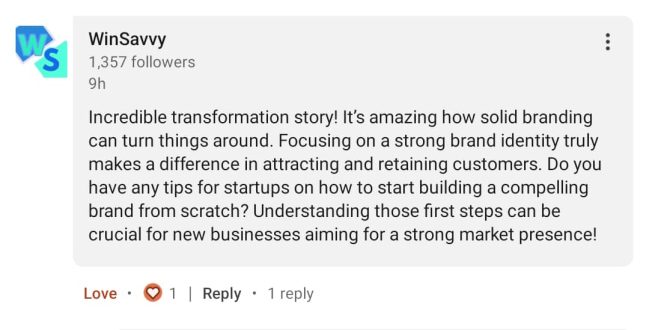
Honestly speaking, he looks good; he is just not my taste.
This statement reflects the predicament of many brands today. They look good, perhaps even unique, but they fail to resonate with their intended audience. Branding is more than just creating a visually appealing identity—it is about building a connection with your audience. At its core, branding is not for you; it is for them.
While it is natural to want your brand to stand out among competitors, you must be cautious not to stray too far from what appeals to your audience. If you focus solely on being different and lose sight of what resonates with your customers, you may find yourself standing out in all the wrong ways. Being unique is important, but it must stay within the realm of what excites and engages your audience.
1. Conduct Thorough Audience Research: The first step in creating a successful brand is understanding who your audience is. Conducting audience research allows you to identify their main points, preferences, and behaviors. This knowledge is crucial because it ensures that your branding efforts align with what your audience truly cares about.
When you know who you are talking to, you can craft a brand that speaks directly to their needs and desires. Without this understanding, you risk building a brand that does not resonate, no matter how visually appealing it might be.
2. Define Your Brand Purpose: Your brand’s purpose should be rooted in serving your audience, not just in satisfying your personal preferences or interests. If your brand’s purpose is built around your own desires, you may end up being the only person who cares about it. Instead, your brand purpose should be a response to a specific main point or need that you have identified through your market research.
For example, if you discover that your audience is struggling with a lack of eco-friendly products, your brand’s purpose could be to provide sustainable alternatives. By aligning your brand’s purpose with your audience’s needs, you ensure that your brand remains relevant and valuable to them.
3. Craft a Defining Brand Identity: Once you have a clear understanding of your audience and a defined brand purpose, you can begin to craft a brand identity that reflects these elements. Your brand identity includes everything from your logo and color scheme to your messaging and tone of voice.
It is important to note that your brand identity should not be based solely on your personal tastes, such as your favorite color. Instead, it should be guided by the insights you have gained from your audience research and aligned with your brand’s purpose and goals. Your brand identity should visually and emotionally resonate with your target audience, reinforcing the connection between your brand and their needs.
4. Consistently Communicate with Your Audience: Once your brand identity is established, consistency is key. You must consistently show up to and for your audience in a voice that communicates your understanding of their main points, needs, or wants. The tone of the voice you use will depend on the nature of your product or service. For example, a brand that sells luxury products will have a different tone of voice than one that sells basic necessities.
Consider the difference between Nike and Coca-Cola. Nike’s branding focuses on aspiration, performance, and self-improvement, appealing to the desire to look and feel better. Coca-Cola, on the other hand, focuses on happiness, refreshment, and social connection, appealing to the desire for a refreshing break or a moment of joy. Both brands communicate effectively with their audiences, but they do so in ways that are appropriate for their respective products.
Building a Strong Branding Foundation If you can successfully implement these foundational elements—audience research, a clear brand purpose, a well-crafted brand identity, and consistent communication—you will be well on your way to creating a brand that not only looks good but also resonates deeply with your audience.
Remember, branding is not just about aesthetics; it is about building a connection. When your audience sees your brand, they should not only recognize it but also feel understood and valued.
As a startup, your goal should be to build a brand that not only captures attention but also fosters loyalty. A brand that is beautiful and unique will make a good first impression, but a brand that truly connects with its audience will stand the test of time.